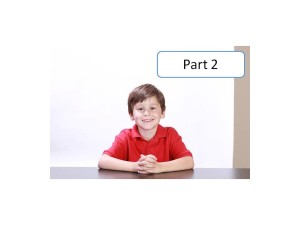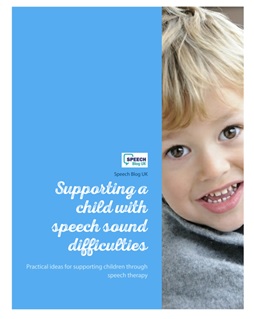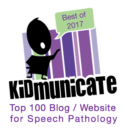Last week, Helen started writing about formal assessments and in particular the CELF-4 (Clinical Evaluation of Language Fundamentals – 4). You can read that post here. This assessment is one of the most widely used assessments in the UK, particularly when gathering information for Statements (or EHCP’s) or to decide if children meet the criteria for a speech therapy service.
The reason for this is that the CELF-4 is a standardised assessment. This means that it has been used on a large sample of children at all different ages, so you can compare a child’s score to the ‘norm’ for their age group and see how they are performing. It also means that you can track the child’s score over time to see improvement, for example has the child made a year’s progress with their language development in a year?
Helen wrote about 4 subtests last week; Concepts and following directions, word structure, recalling sentences and formulated sentences. The scores from these 4 subtests can be combined to give a ‘core language score’. This gives you some guidance on how the child’s language is developing. It is useful if you don’t have time to administer all the subtests. There are other receptive (understanding) and expressive (use) language subtest, which I am going to write about today.
Word Classes
In this subtest, if the child is between 5 and 7 years old, they are shown a page in a book, with 3 pictures on and they have to point to the 2 that go together. For example from window, door and banana, window and door go together as they are part of a house and a banana isn’t. This subtest looks at a child’s understanding of words and their semantics, or how they are linked together. If the child is 8 or over, they don’t get to see the pictures and instead are read the words and have to say which 2 go together. So why is that important? Having secure links between words, enables us to learn new words more easily and also recall the word we want to say quickly. So pointing at the correctly linked pictures gives a score for ‘word classes – receptive’, but you can then ask the child to explain why those 2 pictures are linked and this gives them a score for ‘word classes – expressive’. This can show some interesting issues; the child who understands the words and how they are linked, but can’t explain why or equally a child who has picked seemingly random items, but then gives a really good explanation of why they go together. Either way it tells you many things about the child’s vocabulary!
Sentence Structure
Here, the child is again shown a page in a book with 4 pictures on, read an instruction and asked to point at one of the pictures. However this time all of the pictures are similar as it is testing understanding of word order and concepts. So, for example, the instruction might be ‘show me, the boy is behind the little flower’ then in the pictures as well as the correct answer, there might be a girl behind a little flower, a boy next to a flower and a boy behind a big flower. To get the correct answer, you have to understand all the concepts and how they affect each other. In this way, the subtest can highlight difficulties with certain concepts and also issues with auditory memory and sequencing.
These are the main subtests that give you scores for understanding and use of language. (For children over 13 years of age there is a further subtest). However the CELF-4 has a number of other subtests that give really useful information as well. I won’t go through them all today, but here are 2 of my favourites.
Understanding spoken paragraphs
I find this subtest really useful! The child is read a little story and then has to answer questions about it. So it is testing their memory, ability to retain the most important pieces of information, ability to predict what might happen next and the ability to infer or ‘read between the lines’ and talk about why someone did something or felt a certain way. It also gives you an idea about how the child is likely to function in class at input time, when they are being given lots of information, rather than just being read one instruction at a time.
Word Association
More vocabulary testing!! There are 3 sections in this subtest. In each one the child has 1 minute to think of as many items as they can in a given category e.g. types of transport. Now this might sound easy, but when you know you are being timed, it makes it much harder!
So, after spending a fair amount of time assessing a child, what do we get? As this is a standardised assessment we get a ‘standard score’. This means, through the magic of statistics (which I don’t understand!) the raw score or the number of correct answers is turned into a standard score. This is comparing the results to a range of other children of the same age who have also completed the assessment. So a standard score of 10 is what many children in the population would achieve. We then have the ‘average range’ which is scores between 7 and 13. This means that the majority of children would fall between these 2 scores. But, be aware that a standard score of 7 means the child is in the bottom 25% of their age group and may well have difficulties processing language, particularly in the classroom environment – even though this is called ‘average range’. Standard scores below 7 are indicating a more significant difficulty and a gap of more than 2 years.
As a therapist, the really useful bit comes when comparing scores for the different subtest. You can have children with a ‘spiky’ profile, meaning they have areas of real strength as well as areas of difficulty or equally children who have similar scores in each subtest. This informs my decisions in therapy and target setting. I think that is enough information for today! If you would like more information about the CELF or other assessments we use, just let us know.
If you have found this post useful, do check out our e-book, which is full of practical advice to help you and your child at every step of the way through the speech therapy process.







Hi
How much do you charge for celf assessment
Hi. If you are in the UK, you may find that the NHS will do this for you. If not, you can look for an independent therapist in your area at http://www.helpwithtalking.org Whoever you see will decide which particular assessment will be best for your child – it may be a CELF-4, but may be another assessment if they feel that is more appropriate. Do feel free to contact either of us if you live in our patch! We can’t give you a definite cost as different therapists will charge different amounts and it is likely to depend on a variety of factors, such as your child’s age etc. Hope this helps.